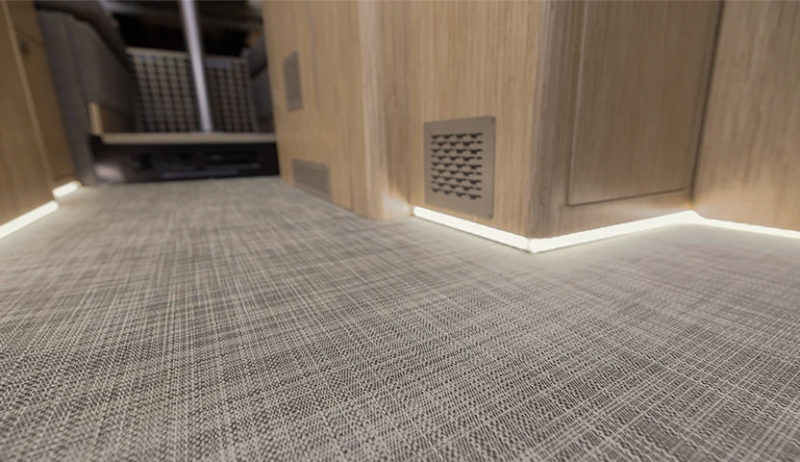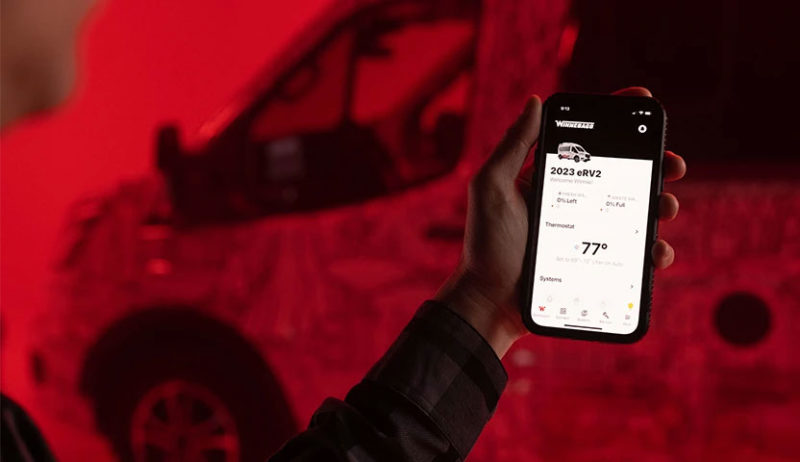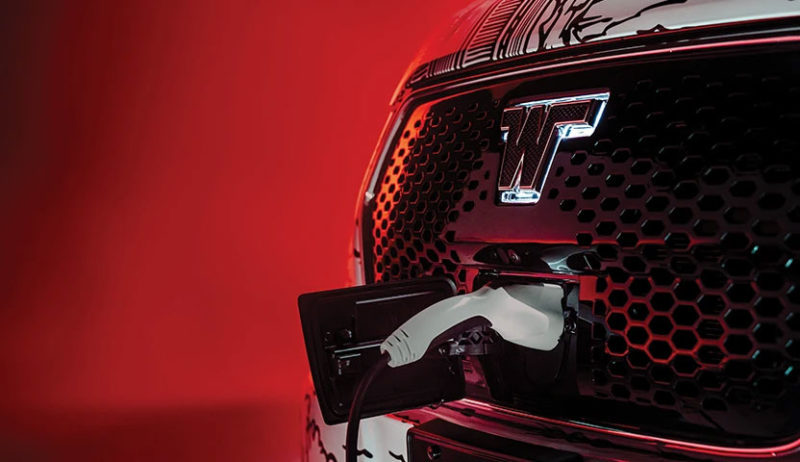A while back, I did some math to see if it was possible to charge an electric vehicle purely from portable solar panels. The answer, sadly, is no. At least not with the current state of things, so any dreams of long-distance off-grid overlanding in a converted EV are on hold.
But, Winnebago is getting closer to giving us on-grid options with extended road-adjacent boondocking. Their new eRV2 is in field testing, with several prototypes on the road already.
It’s built on the Ford E-Transit chassis, relying on Ford’s system to move the vehicle, with Winnebago & Lithionics’ proprietary IonBlade lithium house battery powering all in-cabin functionality. They say it’s good for up to seven days of unplugged living.

Inside, adjustable color LED lighting lets you create ambience, and dim lighting at night for better sleep or stargazing. Some surfaces are made with eco-friendly Paperstone, and features include a shower/toilet bathroom, dining area that converts to a twin/full/queen bed, fridge, and collapsible workstation accessible when swiveling the driver’s set around.
The cassette toilet is removeable, letting you use the entire space as a shower…or just take a nature break in nature. Because why not?
Unfortunately, it doesn’t look like there’s under-the-bed bike storage in this model, but no reason we couldn’t throw a bike rack on the back.

Chilewich flooring leans on the brand’s woven synthetic textiles for durability and easy to clean nature. Repreve fabrics and other recycled and sustainable materials are used throughout the cabin, too.

The Winnebago Connect smartphone app gives you remote control over the system and settings, and there’s an interior touchscreen panel, too. The app not only lets you change settings, it also keeps you up to date on energy usage and remaining battery life.

When they say full electric, they mean it. There are no natural gas or propane accessories or equipment in the van…everything is powered by electric batteries.
While my math on solar charging for vehicle batteries holds (for now), it’s reasonable to expect that the house batteries could be topped off with solar to extend the time away from the grid. And there are quite a few solar panels on top of the eRV2 camper van, too. And with a growing supply of quick chargers along our Interstates, its quite possible to go electric for probably 95% of “Vanlife” adventures.
The eRV2 has two charging ports, one for the car, and the other for the house battery. The car can recharge with Level 2 and 3 chargers, and the 15KWh house batteries can recharge with standard 120/240v and 30- and 50-amp plugs found at RV campgrounds.
There’s quite a bit more to this vehicle – check out this excellent video walk through from someone who’s been testing and living in one:
No official word on range or price yet, but there’s some chat about it early in the video above…they say Ford’s claim is ~108 miles for the stock e-Transit, but adding the weight of a living setup will definitely reduce that. Regardless, it’s encouraging to see that they’re in the final phase of field testing!
